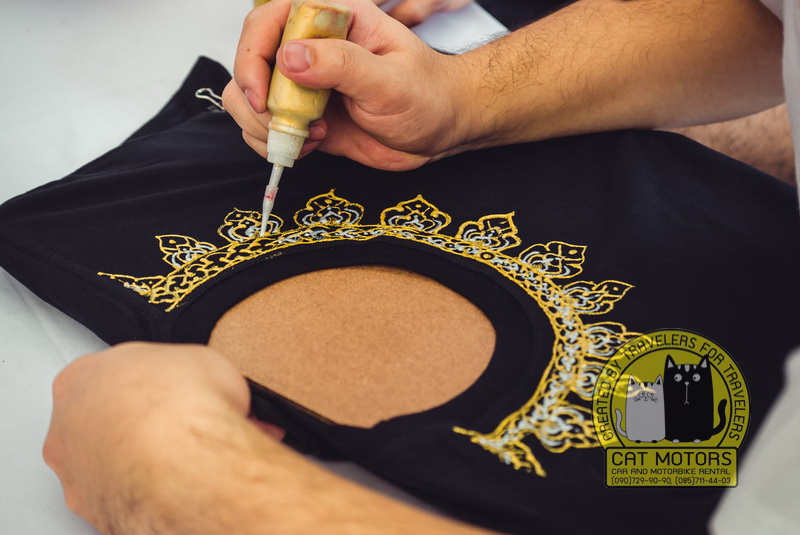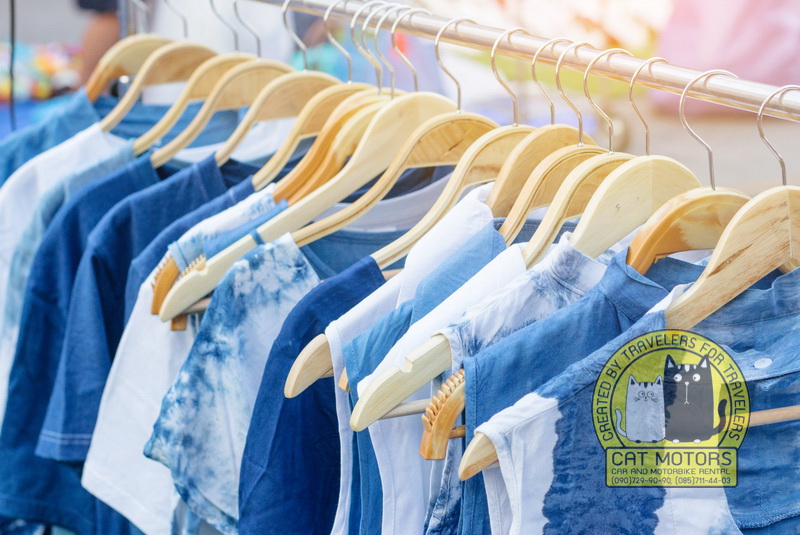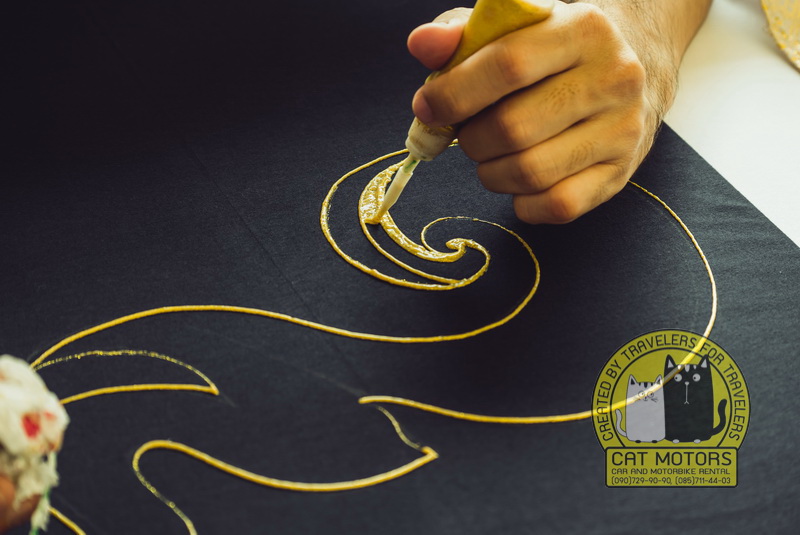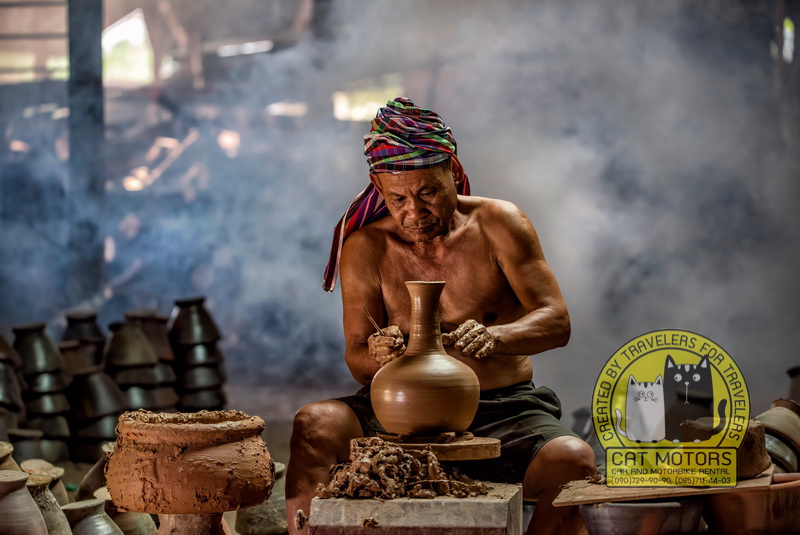Thai shirt
A Thai woman’s blouse falls to her waist. The blouse, with sleeves or no sleeves, crosses over from side to side in the front. There is some thick embroidery or engraving around the neck, on edge of sleeves, and the edge of the blouse. Some are decorated with beads, pearls, and spangles.

A man’s Thai shirt’s stitches are sewn inside with no stitching on the sleeves. For long sleeves, a stitch may be sewn at the elbow or the edge of sleeves. Double or single stitches go around the neck of the shirt straight down the edge of the shirt.
Buttons are made from the same cloth as the shirt. The shirt has pockets on both sides with another on the left chest. The embroidery must be prominent, neat, and correct in accordance with the foundation details. Sewing, the velocity has to be nice not too close or too far. The lining has to be the same color as the shirt.
Thai design
From studying Thai details in art, one can deduce that Thai art originated over thousands of years ago at the same time as Thai art, which is around the ninth century of Buddha. Features of Thai design are similar to Thai tribes in the various regions of the Indo China Cape, especially the Asian region that acquired the Buddhist culture from India.

Early art in China, Myanmar, Cambodia, Indonesia, and Thai was influenced by India. The Shan and other Thai tribes possibly received their art influence and religion from India, as well.
Kubtai
The hat that protects from sunlight and rain is the Kubtai, called in the Shan language, or wickerwork. It is also worn for the various activities, such as a traditional parade to express the uniqueness of the district.

Some places use it to decorate shops, houses, and other places where various exhibitions display its uniqueness and benefits. Today, it is a very popular souvenir for tourists who come to visit Mae Hong Son province.
